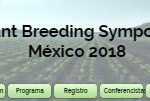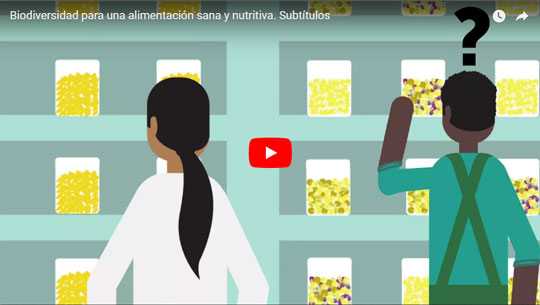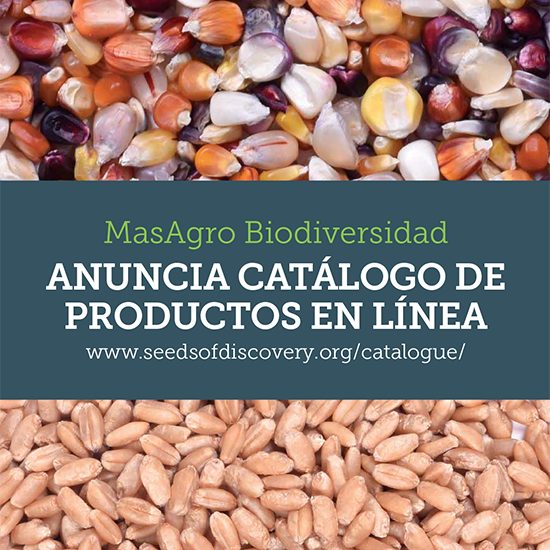-
Wheat Phenotypic Datasets
The Seeds of Discovery project has generated a number of phenotypic datasets for wheat germplasm including accessions in CIMMYT’s germplasm bank (CGB) and pre-breeding materials generated using materials from the CGB. Trials have been grown under optimal conditions as well as under abiotic stress conditions including drought and heat, and under biotic stress conditions including yellow rust.Product details and features
In field trials, standard traits such as yield and days to heading or maturity have been routinely captured. Additional traits, such as spike morphological characteristics, have been recorded in specialized trials. Wheat quality traits, such as grain protein and grain yellow berry incidence, have also been measured for selected germplasm.
Phenotypic data are released in the Dataverse repository that stores flat files and/or the Germinate data warehouse that stores the phenotypic results in a queryable and subsettable format and can link these data to additional genotypic data and germplasm information. In general, analyzed or raw results for each location within an experiment are released as individual datasets within Germinate. Phenotypic data are also released in Dataverse when additional supporting files or explanations of experimental conditions are required. -
Germinate Phenotypic Datasets:- A list of phenotypic datasets available in the Germinate data warehouse provides links to individual datasets.Link
- Each dataset is available for direct download in a simple text format that includes germplasm identifiers, trait names and units, and phenotypic values.
- Phenotypic datasets may also be generated dynamically in a number of ways such as:
- Users can search across all phenotypic data and filter to select data points based on several criteria including germplasm ID, trait name, trait values, and dataset descriptions
- Users can generate “Groups” of germplasm using one or more search or filtering tools and use them to retrieve phenotypic data from one or more trials
- Users can download selected traits from any trial or set of trials
- Phenotypic data from one or more trials can also be visualized on graphs that allow users to select subsets of germplasm based on their phenotypic values.
- Phenotypic data files are exported in a format that make them ready for upload in the Flapjack software where they can be combined with genotypic data.
Dataverse Phenotypic Datasets:
- A list of phenotypic datasets available for download in the Dataverse repository provides links to individual studies.Link
- Studies contain static data files including the phenotypic results file(s), and supporting files such as field maps, management sheets, weather data, or other relevant documents.
- Each study is annotated with standard study-level metadata including: study title, description, authors, data generators, date of generation, keywords, crop ontology terms for traits, links to related studies, links to relevant journal articles
-
Primary Users
Wheat pre-breeders, researchers, students working in relevant fields such as biology, breeding, and bioinformatics, as well as germplasm bank curators and users of CIMMYT’s wheat germplasm bank materials.
Comments
The phenotypic datasets in Germinate primarily contain analyzed BLUPs but it is important to use the dataset description to determine the type of data (raw or analyzed) and treatment conditions applied in the trial. Please contact Cimmyt-mab-seed@cgiar.org for additional help with accessing or working with any of these phenotypic data files.
Availability
Phenotypic Datasets in Germinate: http://germinate.cimmyt.org/wheat/#categorical-datasets
Phenotypic Datasets in Dataverse: https://data.cimmyt.org/dataverse/seedsofdiscoverydvn?q=keywordValue%3Awheat
For more information
- Please send us a message to Cimmyt-mab-seed@cgiar.org
News
NEWS
- Wheat phenotyping workshop
The International Maize and Wheat Improvement Center (CIMMYT) extends a cordial invitation to participate in the training workshop "Wheat phenotyping for the identification of germplasm with high yield potential and tolerance to drought and heat". This will be held in CIMMYT HQ, Texcoco, State of Mexico, on September 28th, 2018 (from 9:00 – 14:00 hrs) as part of the II Plant Breeding Symposium México 2018 (https://trasmejoragen.wixsite.com/inicio) The objective of this workshop is to train participants in the phenotypic characterization of wheat germplasm. Research themes include: climate change; priority characteristics for wheat for Mexico; phenotyping of genetically diverse materials and in the ...
- II Plant Breeding Symposium Mexico 2018
MasAgro Biodiversity announces the II Plant Breeding Symposium Mexico 2018 which will be held on September 6 and 7, 2018 at the CIMMYT HQ, Texcoco. Mexico. This event belongs to the series of DuPont Plant Sciences Symposia. For more information please visit the website:https://trasmejoragen.wixsite.com/inicio
- New video: Crop biodiversity for healthy, nutritious livelihoods
Erratic weather, poor soil health, and resource shortages keep millions of maize and wheat farmers in developing countries from growing enough to feed their households and communities or to harvest a surplus to sell.
- 3rd KDSmart app workshop
The International Maize and Wheat Improvement Center (CIMMYT) extends a cordial invitation to participate in the training workshop on the use of the KDSmart app. This will be held in Texcoco, State of Mexico, on December 20, 2017 (from 9:00 - 17:00 hrs).














